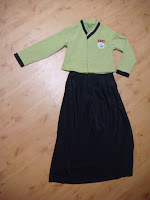Many ambitious students actively volunteer to teach students, to fundraise and to donate. I, as one of those students who are eagerly looking forward to participate in volunteering, am a member of a volunteering club, ‘KMLA Habitat for Humanity’. When I first entered KMLA and heard about the volunteering program which all of the club members participate regularly, I thought it would be a unique experience – just a unique experience, no more or no less. However, I had a chance to think over my first definition of the club activity when I went to Thailand this summer.
Most of the students hesitated a lot before going overseas to volunteer not only because of the expenses but also the time that needed to be sacrificed. A week at Thailand would mean less time to study, less time to play with friends, less time to go to the theater and many more. There were 13 students all together who had decided that volunteering at Thailand would mean more than anything else, and off we went to Thailand.
As most of the people would notice from the name of our club, ‘KMLA Habitat for Humanity’, we build houses for people who need help. There is ‘Habitat for Humanity International’ which controls and guides all of the volunteering worldwide. We were assigned a coordinator named Malinie and a house of 6m x 6m to build. I still remember our first moment at the building site – surrounded by new environment, mesmerized by the beautiful nature, and worries on our mistakes we may make during our job. I had never worked with a shovel before; in fact, I never imagined I would throughout my whole life. But there I was, on the pile of gravels, holding a shovel and trying my best to shove it through the gravels. It was people’ first time for most of the member to work in a construction site, but we did our best and followed the specific instructions given by Malinie. When we went back to our hotel after finishing working in the building site on our first day, everybody fell asleep right after taking a hot shower.
For four days we actually built a house; we filled the base of the house with gravels, covered it with mud, mixed cement, poured the cement and covered the floor, piled bricks along the walls using cement, higher than ourselves. It was very tiring since none of us were used to extreme 8 hours of work a day, but nobody complained. All of us were thankful for the fact that we could actually help the owners of the house, Pong and Mon, that we were able to afford to come here and work, and were surprised at how delicious Thailand food was in every snack time and meal time. One day, we couldn’t finish the work assigned for that day. Malinie suggested that we leave the building site according to the schedule since we had to rest, and the owners would finish up the remaining work. A hot shower and a delicious meal was tempting indeed, but nobody left the building site; we all worked together to finish our work, and we were able to finish it faster than we expected. The owner of the house held each of our hands, thanked us almost crying when we got into the van to leave the site.
On the last day, we had a little ceremony to dedicate the house to Pong and Mon. All of their families and the villagers gathered in front of their new house, which was slightly unfinished due to time constraint, and we all had barbecue. They blessed us by tying traditional bracelets, giving us umbrellas and flying away fire-lit kites into the sky. The owners cried during the ceremony, which was especially touching for me, since I was surprised at what we were able to do for the owners, who were preparing to start a new life at the house we had built together.
What Habitat for Humanity had taught me was more than how to build houses and what to put in when making cement. It was my first time actually interacting with the people who I was helping, unlike donations or fundraisings that I experienced before. Also, I believe I felt proud when we were able to dedicate the house to the owners, since even though the work to build up the house was tiring, demanding, and difficult, we did our best. Habitat for Humanity has taught me that I could actually help people, and there are some people who cry thankful tears for our efforts. Habitat for Humanity has taught me that I would be able to make changes in world, which would change many people’s life. It also taught me that I don’t need to be a supernatural or a billionaire to help people; all I need is a devotion towards what I do, sincerity towards whom I help and a little courage to give up what I have and offer it to the people with less opportunities.
















